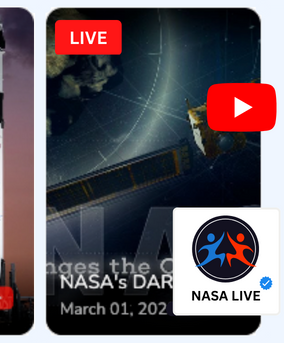Creating Engaging Video Tutorials and How-To Guides

In this digital age, video tutorials and how-to guides have become integral tools for delivering educational content. With the ability to connect on a personal level, these resources can be incredibly influential in shaping user understanding and driving engagement.
Understanding the Importance of Video Tutorials
Video tutorials serve as an increasingly essential channel in today's rapidly digitalizing world. With their ability to convey complex information succinctly and engagingly, video tutorials are changing the way we learn and communicate. They are reshaping education, marketing, product demonstrations, and a plethora of other areas, making information more accessible and digestion easier.
The Power of Educational Content
In essence, video tutorials are educational content presented in a visually compelling and easy-to-understand manner. However, they represent much more than just a teaching tool. They provide a platform where intricate ideas can be simplified and communicated in a visually engaging and dynamic way.
Whether you're teaching a new programming language, showcasing how to assemble a product, or illustrating a complex scientific theory, video tutorials empower viewers with the ability to learn at their own pace. They can pause, rewind, or replay the tutorial, ensuring they fully grasp each concept before moving on to the next. This flexibility accommodates different learning styles and paces, making video tutorials a highly inclusive educational tool.
Moreover, video tutorials bring the content to life. They often combine various multimedia elements - images, graphics, text, voiceover, and music - to create a rich, immersive learning experience. This not only enhances the learner's understanding but also increases their retention of the information presented.
The Need for User Engagement
Engagement, a vital aspect of online content, refers to the extent to which users interact with your content. The more users interact with your content - through actions like watching, liking, commenting, or sharing - the higher your engagement rate.
Videos are powerful tools for boosting user engagement. In comparison to text-based content, videos have a higher capacity to captivate the viewer's attention and evoke emotional responses. The combination of visual and auditory stimuli makes video content more memorable, improving information retention.
Additionally, videos, especially tutorials, encourage active learning. They are interactive, often prompting viewers to carry out certain tasks or activities as part of the learning process. This active participation fosters deeper engagement, enhancing the viewer's connection with the content and the brand.
Moreover, higher engagement rates correlate with improved search engine rankings. Search engines perceive highly interactive content as valuable, boosting its visibility to more potential viewers. This enhanced visibility, in turn, can result in more traffic, more engagement, and ultimately, a more significant impact.
Thus, with their ability to communicate complex ideas engagingly and their capacity to drive user engagement, video tutorials are becoming an indispensable tool in the digital age.
Essential Tips for Creating Video Tutorials
Creating a captivating video tutorial involves more than just explaining a process or showcasing a product. It requires a thoughtful approach that includes selecting the right topic, simplifying the content, using high-quality equipment, and creating an interactive presentation. Each of these components plays a vital role in making your video tutorial effective and engaging.
Choosing the Right Topic
The topic for your video tutorial is the foundation upon which the entire content is built. Therefore, choosing a suitable topic is crucial for the success of your video. The ideal topic should not only be relevant to your niche or brand, but it should also resonate with your target audience, meet their needs, or fill a knowledge gap.
To identify such topics, you can use keyword research tools to discover what your target audience is searching for in your niche. Trending topics or frequently asked questions in your industry can serve as excellent starting points for your video tutorial. Additionally, consider seeking direct input from your audience through surveys or social media polls. This ensures that your content is both in-demand and valuable to your viewers.
Keeping It Simple
While it's important to provide comprehensive content, it's equally crucial to maintain simplicity and clarity in your video tutorials. Remember, your primary goal is to educate and facilitate understanding, not to overwhelm or confuse your viewers.
To achieve this, use simple, jargon-free language that your audience can easily understand. Break down complex ideas into smaller, manageable chunks. Ensure your instructions are concise, clear, and direct. Whenever possible, demonstrate each step visually to supplement your verbal instructions.
Keeping your content simple and clear makes it more digestible and user-friendly, enhancing the overall learning experience for your viewers.
Using High-Quality Equipment
The quality of your video has a significant impact on the viewer's experience and perceptions of your brand. Poor video or audio quality can be distracting and might cause viewers to abandon your tutorial.
Invest in good quality recording equipment to ensure your video and audio are clear and professional. This includes a high-resolution camera, a good microphone for clear audio, and proper lighting equipment to illuminate your recording space. Remember, high-quality production doesn't necessarily mean expensive - there are budget-friendly options that can still deliver great results.
In addition to recording equipment, consider using professional video editing software to polish your video, add effects, or include additional elements like text overlays or animations.
Interactive and Engaging Presentation
In today's digital age, merely presenting information isn't enough - your content needs to engage and captivate your viewers. For this, incorporating interactive elements and visual aids in your video tutorials can be highly beneficial.
Use infographics, charts, or animations to visually represent complex data or processes. This not only enhances understanding but also adds a dynamic component to your video, making it more engaging. Interactive elements like quizzes, tasks, or prompts for viewer actions can encourage active participation, thereby fostering deeper engagement and learning.
Additionally, consider incorporating storytelling techniques to make your presentation more relatable and interesting. A conversational tone, anecdotes, or humorous elements can help establish a connection with your audience, making the learning experience enjoyable.
Remember, an engaging presentation can not only boost viewer retention and satisfaction but also promote sharing, expanding the reach of your video tutorial.
How to Enhance Your Video Guides
Making a video tutorial is only half the battle; enhancing its features for optimal reach, accessibility, and viewer retention is equally important. Incorporating closed captions, maintaining an optimal video length, enhancing SEO with transcriptions, and leveraging social media platforms are some of the key strategies to enhance your video guides.
Incorporating Closed Captions
Closed captions are an essential feature for video tutorials as they enhance accessibility, particularly for viewers who are deaf or hard of hearing. They can also be beneficial for those who prefer to watch videos without sound, such as in noisy environments or in situations where silence is required. Moreover, closed captions can boost your video's SEO, as search engines can crawl and index this text, improving your video's discoverability. To delve deeper into the importance of closed captioning, you can explore this insightful article.
Optimal Video Length
The length of your video tutorial can significantly impact viewer engagement and retention. If your video is too long, you risk losing the viewer's attention, causing them to abandon your video before the end. On the other hand, if your video is too short, you might not be able to convey enough information or adequately explain complex ideas. As a rule of thumb, try to keep your video concise yet comprehensive, ensuring that you provide value at each moment. To learn more about maintaining optimal video length, check out this comprehensive guide.
Enhancing SEO with Transcriptions
Transcriptions can significantly enhance the SEO of your video tutorials. Much like closed captions, transcriptions make your video content accessible to a larger audience, including those who may prefer reading over watching. Moreover, transcriptions allow search engines to better understand your content, as they provide additional text that can be crawled and indexed. This can improve your video's search engine rankings, making it more discoverable to users. For more details on the benefits of video transcription for SEO and accessibility, visit this insightful page.
Leveraging Social Media Platforms
Social media platforms offer excellent opportunities for distributing your video content to a broader audience. By sharing your video tutorials on platforms like Facebook, Twitter, Instagram, and LinkedIn, you can increase visibility, foster user engagement, and drive more traffic to your primary content platforms. Additionally, each social media platform has unique features that can be utilized to optimize your video content, such as hashtags on Twitter or IGTV on Instagram. To learn more about optimizing video content for different social media platforms, check out this comprehensive guide.
Monitoring and Improving Your Videos
Even after you’ve successfully created and shared your video tutorial or guide, the work is not over. Monitoring your video's performance through analytics, conducting A/B testing, and seeking audience feedback are crucial steps towards improvement and enhanced viewer engagement.
Using Video Analytics
Video analytics can provide you with vital information about how your viewers interact with your video content. These metrics can include data about viewer demographics, playback locations, viewer retention, engagement metrics like likes, shares, and comments, among others. By analyzing these metrics, you can gain a deeper understanding of your viewers' behavior and preferences, which can help you create more targeted and engaging content in the future. To help you make the most of these metrics, this comprehensive guide provides insightful information on understanding and leveraging video analytics.
A/B Testing
A/B testing involves creating two versions of a video element and testing them against each other to see which performs better. These elements could be thumbnail images, video lengths, titles, or calls-to-action. By doing this, you can gain insights into what factors most influence viewer engagement and satisfaction. This feedback can then be used to optimize your future videos, ensuring they are as effective and engaging as possible.
Gaining Feedback and Iterating
Feedback is a valuable resource that can significantly influence the success of your video tutorials and guides. Encourage your viewers to leave comments, ask questions, and share their thoughts about your content. Listening to your audience's input can help you identify areas of improvement, understand what is resonating with your viewers, and what's not. Remember, content creation is an iterative process; using your viewers' feedback to continuously improve and evolve your content is key to creating successful video tutorials and guides.
Conclusion
Creating engaging video tutorials requires understanding your audience, delivering high-quality content, and continuously improving your offerings based on feedback and analytics. With these tips, you'll be well on your way to creating video content that educates, engages, and enhances the user experience.
FYI: You can embed YouTube Live automatically with the EmbedVidio platform. Start a free trial and display your social media video widgets now.

Embed live video feeds on your website automatically!
Try EmbedVidio and automatically add YouTube, Facebook, and Twitch live video feeds to your website.
All features included with every planFAQs
What equipment is necessary for creating high-quality video tutorials?
High-quality camera, good lighting, a quality microphone, and video editing software are crucial for creating top-notch video tutorials.
How can I improve my video's SEO?
Incorporating keywords in your title and description, adding transcriptions, and using appropriate tags can significantly improve your video's SEO.
What is the optimal length for a video tutorial?
The optimal length for a video tutorial varies based on the topic. However, it's crucial to ensure your video is long enough to comprehensively cover the subject without dragging on and losing viewer interest.
How can I make my video tutorials more engaging?
Utilizing visual aids, infographics, interactive elements, and a conversational tone can make your video tutorials more engaging.
Why are video tutorials important?
Video tutorials are an effective way to convey complex information in an easy-to-understand format. They can increase user engagement, improve information retention, and expand your content's reach.